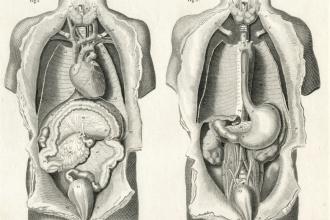Do you still remember what is the innervation of the flexor digitorum superficialis? The author of a recent Medscape article complains that students are asked to memorize facts that have quite limited clinical relevance, yet they have been deprived of basic concepts used to understand evidence and make decisions. His article, “Anatomy factoids do not create great physicians,” made me think and ask myself: how do we define a good doctor and how do we make one?
My search on the subject returned a British Medical Journal article from 2002 asking the very same question. In response to a survey, 102 doctors from 24 countries listed more than 70 qualities that a good doctor should have. The BMJ article playfully lists many of the suggested qualities in alphabetical order. The most often mentioned qualities starting with the letter C win: caring, concerned, competent, compassionate, creative, communicative, calm, comforter, conscientious, compliant, cooperative, cultivated. One respondent suggests that a good doctor requires a lot of science but also a little bit of magic. Another respondent urges us not to believe that a good doctor is the one who cures the most, because in many specialties recovery is not a frequent outcome. Yet another respondent cautions: whatever other qualities truly good doctors have, they must be technically proficient and know the craft of medicine. Rather imaginatively one respondent suggests that good doctors with their ears hear all that the patient says, with their eyes see all that the patient shows, with their hands feel all that is hidden from their eyes, and with their mind detect the unspoken. A down-to-earth respondent says: Put down your pen, turn away from your desk, face the patient, sit back, and give him or her your full attention. That is a good doctor.
I was disappointed that far fewer responses were received to illuminate how to make a good doctor. The theme of several comments was that we are not very good at it. At least 13 respondent said that all we can hope to do is select students with the right “gifts” like extra dedication, extra humanism, or extra selflessness—not just with the right exam results.
A cynical respondent listed how not to make good doctors. Assign raw medical graduates to a busy medical unit. Make them work with an everchanging variety of senior colleagues, none of that old fashioned apprenticeship. Make sure they never see the same patient twice (compliance with time tables is more important than providing continuity of care).
In summarizing the varied comments about creating good physicians the editor’s view was that we need medical schools to be honest with students and teach them about how things really are. Some patients can be difficult. Many clinical decisions do not have an evidence base. There is uncertainty over much of medicine. We must teach the student in the real world.
In the early 1990s, a dozen years before the informal BMJ survey, the Royal College of Physicians and Surgeons of Canada recognized the unprecedented changes in all specialties and the impact of societal changes on medical practice. There was an urgent need to review the medical education process. The CanMEDS Interactive project was a move away from the practice of offering credentials to physicians solely on the basis of time spent on rotations. The framework, updated over the years, describes in detail the key competencies in seven unique but interrelated roles: medical expert, professional, leader, collaborator, communicator, scholar, and health advocate. Program directors are responsible for demonstrating that their programs incorporate the specified content areas. Complex trainee evaluation techniques have been recommended by the College. This project has now become an internationally recognized educational effort for trainees to effectively meet the health care needs of the people they serve. No better time than now, with the havoc created by the COVID-19 pandemic, to find out if this medical education reform is meeting its objectives.
As to the innervation of the flexor digitorum superficialis? The medium nerve from the roots of C7,C8, and T1. I looked it up on Google. A sign of times.
—George Szasz CM, MD
Suggested reading
Prasad V. Anatomy factoids do not create great physicians. Medscape. Accessed 8 September 2020. www.medscape.com/viewarticle/933111.
The Royal College of Physicians and Surgeons of Canada. CanMEDS Interactive. Accessed 8 September 2020. www.canmeds.royalcollege.ca.
Wolpe PR. What’s a good doctor and how do you make them: BMJ 2002;325:711. www.bmj.com/content/325/7366/711.
This post has not been peer reviewed by the BCMJ Editorial Board


